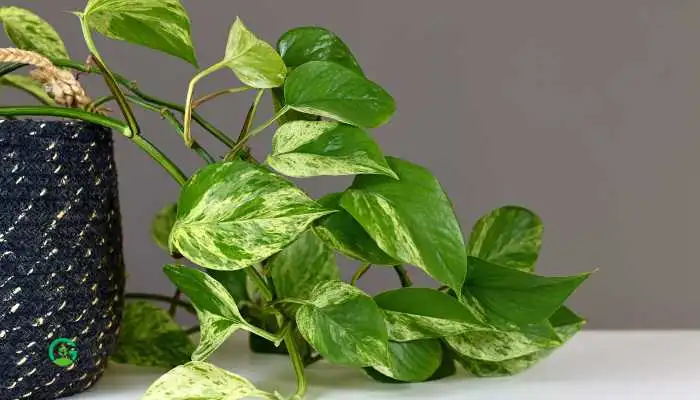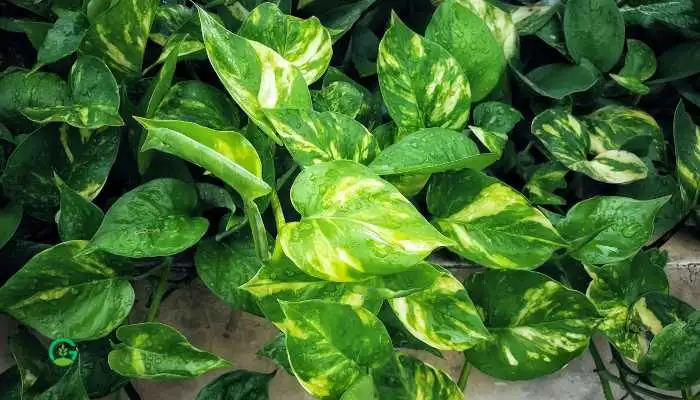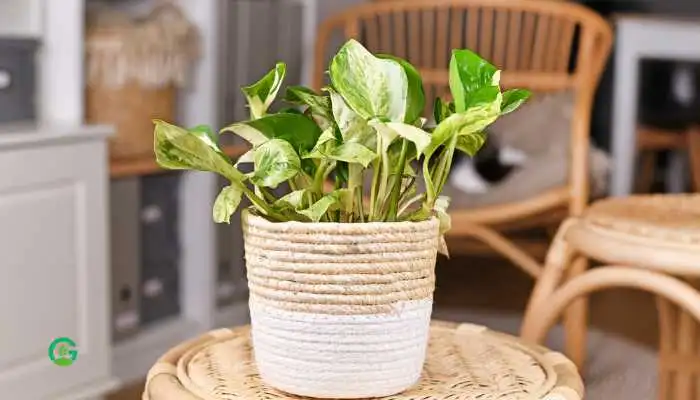Introduction
Are you looking for a beautiful, low-maintenance houseplant that can thrive in almost any environment? Meet the Manjula Pothos!
This stunning plant is not only easy to care for but also adds a touch of elegance to any space. Whether you’re a seasoned plant parent or a beginner, the Manjula Pothos is a fantastic addition to your indoor garden.
Manjula Pothos Table of Contents
What is Manjula Pothos?
Manjula Pothos (Epipremnum aureum ‘Manjula’) is a cultivar of the popular pothos plant, known for its striking variegated leaves.
Unlike other pothos varieties, the Manjula Pothos features heart-shaped leaves with a mix of green, white, and cream hues, giving it a marbled appearance.
This plant is a hybrid developed by the University of Florida and has quickly become a favorite among houseplant enthusiasts.

The Unique Beauty of Manjula Pothos
What sets the Manjula Pothos apart from other plants is its unique foliage. Imagine a painter meticulously brushing green and white on a canvas, creating a mesmerizing pattern. The leaves of the Manjula Pothos are truly a work of art. Each leaf is different, with varying degrees of variegation, making this plant a living masterpiece.
Benefits of Having Manjula Pothos at Home
Bringing a Manjula Pothos into your home offers numerous benefits:
- Air Purification: Like other pothos plants, the Manjula Pothos helps purify the air by removing toxins such as formaldehyde and benzene.
- Low Maintenance: This plant is perfect for busy individuals as it requires minimal care.
- Aesthetic Appeal: Its unique variegated leaves add a touch of beauty and elegance to any room.
- Mood Booster: Having plants around can improve your mood and reduce stress levels.
How to Care for Manjula Pothos
Caring for a Manjula Pothos is straightforward, even for beginners. Follow these simple guidelines to keep your plant healthy and thriving.
Light Requirements
Manjula Pothos thrives in bright, indirect light but can also tolerate low light conditions. However, to maintain its vibrant variegation, it’s best to provide it with plenty of indirect sunlight. Avoid direct sunlight as it can scorch the leaves.
Watering Schedule
Water your Manjula Pothos when the top inch of the soil feels dry. Overwatering can lead to root rot, so it’s essential to let the soil dry out between waterings. A good rule of thumb is to water once a week, but this may vary depending on the humidity and temperature of your home.
Soil and Fertilization
Use a well-draining potting mix for your Manjula Pothos. A mix designed for houseplants or a combination of peat moss, perlite, and vermiculite works well. Fertilize your plant every 4-6 weeks during the growing season (spring and summer) with a balanced, water-soluble fertilizer.
Pruning and Propagation
Pruning your Manjula Pothos helps maintain its shape and encourages new growth. Use clean, sharp scissors to trim back any leggy or damaged stems. You can also propagate your plant by taking stem cuttings and rooting them in water or soil.
Common Problems and Solutions
Here are some common issues you might encounter with your Manjula Pothos and how to solve them:
- Yellowing Leaves: This could be a sign of overwatering. Check the soil moisture and adjust your watering schedule accordingly.
- Brown Tips: This can result from underwatering or low humidity. Increase humidity levels by misting the plant or using a humidifier.
- Pests: Common pests include spider mites and mealybugs. Treat infestations with insecticidal soap or neem oil.

Manjula Pothos vs. Other Pothos Varieties
Manjula Pothos stands out among other pothos varieties due to its distinct leaf variegation. While plants like the Golden Pothos or Marble Queen have variegated leaves, the Manjula Pothos features a broader spectrum of colors and a more unique pattern. Its slower growth rate also means it retains its compact, bushy appearance longer.
Decorating Tips with Manjula Pothos
Here are some creative ways to incorporate Manjula Pothos into your home decor:
- Hanging Baskets: Display your Manjula Pothos in hanging baskets to show off its trailing vines.
- Bookshelves and Desks: Place smaller pots on shelves or desks to add greenery to your workspace.
- Wall Planters: Use wall planters to create a vertical garden with your Manjula Pothos.
Buying and Planting Manjula Pothos
When purchasing a Manjula Pothos, look for healthy plants with vibrant leaves. Avoid plants with yellowing or damaged foliage. After bringing your plant home, repot it into a slightly larger pot with fresh soil to give it room to grow.
Conclusion
The Manjula Pothos is a versatile, low-maintenance houseplant that can brighten any space with its unique, variegated leaves. By following simple care guidelines, you can enjoy the beauty of this plant for years to come. Whether you’re an experienced plant enthusiast or just starting, the Manjula Pothos is a perfect addition to your indoor garden.
FAQs
How often should I water my Manjula Pothos?
Water your Manjula Pothos when the top inch of the soil feels dry. Typically, this is once a week, but it can vary based on your home’s environment.
Can Manjula Pothos tolerate low light conditions?
Yes, Manjula Pothos can tolerate low light, but for best growth and to maintain its vibrant variegation, bright, indirect light is preferred.
How do I propagate Manjula Pothos?
Propagate your Manjula Pothos by taking stem cuttings and rooting them in water or soil. Ensure the cuttings have at least one node where roots can develop.
Why are the leaves of my Manjula Pothos turning yellow?
Yellow leaves can be a sign of overwatering. Check the soil moisture and adjust your watering schedule to prevent root rot.
What should I do if my Manjula Pothos gets pests?
Treat pests like spider mites and mealybugs with insecticidal soap or neem oil. Regularly inspect your plant and clean its leaves to prevent infestations.
















